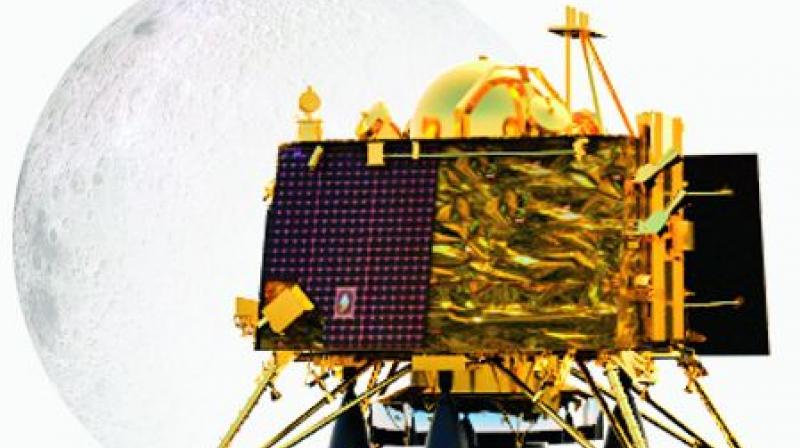Chandrayaan-2: India’s late-night date with Moon

BENGALURU: With a billion and more Indians waiting for the historic moonwalk by a Made-in-India probe, space scientists are holding their nerve to accomplish the feat in the wee hours of Saturday.
Landing of ‘Vikram’ and the walk by rover ‘Pragyan’ are crucial as both will attempt to tread on uncharted territory — a region close to the south pole of the earth’s natural satellite. The landing will happen between 1.30 am and 2.30 am and the walk, albeit at snail’s pace, will commence at 5.30 am, both big moments for the nation as only three countries have succeeded in touching down on lunar soil — the United States, Russia and China — but none in the south pole region. This region is of interest to scientists because of the possibility of water ice being there. That could be useful for moon habitation and for making fuel for exploring Mars.
Scientists also want to look for deposits of helium-3, potentially a future energy source for the earth. The lander and rover are programmed to operate for a couple of weeks.
They carry instruments that can determine the composition of moon rocks and make other measurements. And, riding on the homegrown mission are hopes of a country which has constantly asserted its technological prowess on the global stage, all on shoe-string budgets.
For instance, the budget of Chandrayaan-2, at Rs 978 crore, is relatively inexpensive compared with other space missions. It cost less than $150 million, cheaper than the budget to make the 2014 Hollywood film Interstellar.
Therefore, a successful landing on lunar soil will signal the emergence of the country as the leader of low-budget expeditions to the moon, particularly at a time when Nasa has announced plans for an international collaborative effort half a century after American astronaut Neil Armstrong set foot on the moon. It will also mark a befitting centenary tribute to the late Dr Vikram Sarabhai.
As anticipation built for Saturday’s landing, Dr K. Sivan, chairman of Isro, best summed up mixed vibes in the Indian space agency: “Everyone is feeling good as everything is in place, but there’s an element of anxiety, just like with every space mission, but more this time as we are attempting something very complex for the first time.”
He told this newspaper that everything is moving according to plan ahead of the historic moment and all instruments on board the lander ‘Vikram’ and mothership Chandrayaan-2 are functioning normally.
Chandrayaan-2 is expected to enhance the understanding among scientists about the origin of the moon, earth and the entire solar system.
One of the objectives of this mission is to further the findings of Chandrayaan-I, which confirmed the presence of water on the moon in 2008. If Chandrayaan-2 succeeds in discovering substantial reserves of water on lunar surface along with other valuable minerals, it would be contributing to the establishment of a lunar outpost or future moon colony. Of course, it will also set the tone for the proposed flight of an Indian into space-on board a capsule made indegenously and flown by an Indian rocket in 2021.
Joining the nation in wishing Isro a success, Prime Minister Narendra Modi said the mission manifests the best of Indian talent and spirit of tenacity. “Its success will benefit crores of Indians,” he said in a series of tweets.

